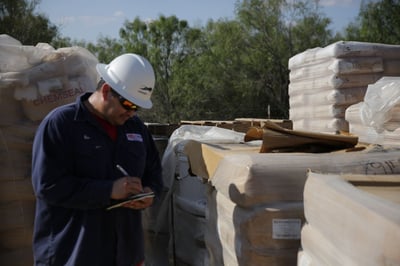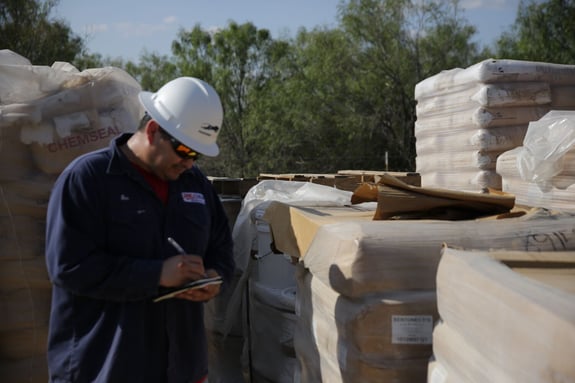 Drilling mud selection requires thorough well planning, expertise and experience. Factors to be considered in selecting drilling muds include formation geology, temperature and pressure; expected drilling performance; and the type of rig and any additional fluid-related equipment. Financial impact must also be considered when selecting fluids, as oil-based fluids are generally more expensive than water-based fluids.
Drilling mud selection requires thorough well planning, expertise and experience. Factors to be considered in selecting drilling muds include formation geology, temperature and pressure; expected drilling performance; and the type of rig and any additional fluid-related equipment. Financial impact must also be considered when selecting fluids, as oil-based fluids are generally more expensive than water-based fluids.
In high-pressure, high-temperature (HPHT) drilling environments, defined as pressure greater than 15,000 psi (103.43 MPa) and temperature greater than 350°F (177°C) in the American.
Petroleum Institute’s Technical report 17TR8, fluid selection decisions become even more critical, complex and costly. In HPHT drilling situations, oil-based fluids are typically chosen instead of water-based fluids for HPHT wells due to improved thermal stability. Oil-based fluid systems are stable to well temperatures just under 550°F while water-based polymer fluid systems are used typically to 400°F.
In 2017, Hart Energy published Challenging HP/HT Limits of Water-based drilling fluids. The article discusses the introduction of polymer additives in drilling mud to extend temperature limits. Challenges cited by the authors for the use of water-based fluids in HPHT environments include minimizing solids volume and fluid loss, and maintaining fluid viscosity. According to the authors, “The key to improving the thermal stability of high-performance water-based fluids and drill-in fluids is to replace the biopolymers with high temperature tolerant synthetic polymers.”
The concept of improving thermal stability with polymer additives is not new and the oil and gas industry has been working on high limit temperature improvements to water-based drilling fluids for at least 50 years. As working temperatures and pressures increase so must the limits of additives and chemicals that are used to enhance mud stability.
As early as 1972, Milchem Incorporated filed a U.S. patent Composition and Process for the Reduction of Thermal Degradation of Aqueous Drilling Fluids. The invention relates to the addition of polymer, metal and salt additives to reduce thermal degradation for aqueous drilling fluids. In 1984, inventors received the U.S. Patent High Temperature Dispersant. The invention relates to dispersants for drilling fluids being used at high temperatures up to 500°F.
In 1991, German chemists were issued the U.S. patent Drilling Mud Additives Based on a Polymer Mixture, Their Use, and a Process for Their Production. The patent relates to the necessity of using polymer drilling fluid additives to meet temperature stability requirements.
Operators too, understand the importance of the right fluid system in high temperature, high pressure drilling. On page 20 of Amoco’s Drilling Fluids Manual, which we included in our blog as one of the Five Most Useful Online Drilling Fluid Resources , “[Oil-based fluids] may also be selected for special applications such as high temperature/high pressure wells, minimizing formation damage, and native-state coring.” However, there are environmental concerns using oil-based mud in certain areas where they may be either prohibited or severely restricted.
Oil-based drilling fluids continue to be the preferred choice for lengthy high temperature drilling programs, however chemists, scientists and engineers continue to search for new methods of enhancing and improving thermal limits of water-based fluids.
At Panther Fluids Management, our drilling fluid systems are backed by years of experience and have consistently lowered overall mud costs for clients. We consult with the operator to design the best fluid system for each well; including everything from discrete services like shale shaker design and shaker screens to completion fluids design to complex closed-loop systems for solids control to drilling cuttings waste management including haul-off and disposal. We understand the challenges brought on by high temperature and high pressure formations and can adapt the fluid system to any changes in temperature and pressure that may be encountered while drilling. Contact Panther Fluids Management today for the latest in drilling fluids technology.

